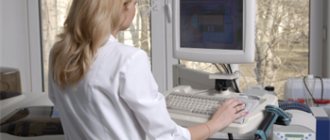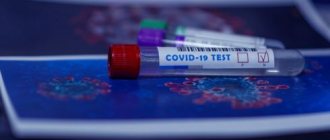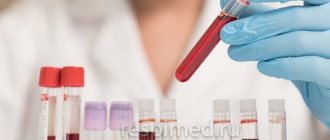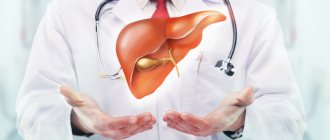Folic Acid (Vitamin B)
Folic acid is a vitamin B that plays a vital role in a number of human life processes. These include metabolism, cell growth, DNA synthesis, and regeneration of red blood cells. The influx of folic acid into the body occurs during food intake. The substance is absorbed in the small intestine and accumulates in the liver. The main sources of folic acid are vegetables, fruits, yeast, legumes, eggs, and dairy products.
Folic acid deficiency is a very serious thing. It can lead to megaloblastic anemia and a number of serious neurological disorders. If folic acid deficiency occurs during pregnancy, it significantly increases the risk of the fetus developing neural tube defects. There are several reasons for a lack of folic acid in the body, which include lack of intake, problems with absorption, or increased utilization in the body. The latter factor is often observed in women during pregnancy. Also, increased utilization may occur due to alcoholism, hepatitis and other problems that have a detrimental effect on the liver.
In order to determine the content of folic acid in the body, there are a number of specific studies. Both blood serum and red blood cells can be studied. If we are talking about studying blood serum, this analysis can be used to determine how long ago and in what quantity folate entered the body. And an analysis of red blood cells helps determine the level of accumulated folic acid in the body at the moment. If a test of red blood cells shows a low concentration of folic acid, this indicates that the entire body is deficient in this substance. If a deficiency is detected when studying blood serum, this may indicate problems with metabolism and vitamin B12 deficiency. If there are problems with the concentration of this vitamin, folic acid will be poorly absorbed by the body even if it is properly supplied with food. In medical practice, biomaterials are rarely tested exclusively for folic acid content. The analysis is always carried out comprehensively, together with the study of the biomaterial for the concentration of other vitamins and minerals.
Explanation of the test for folic acid (Vitamin B)
The folic acid norm is from 7.0 to 39.7 nmol/l.
A decrease in the amount of vitamin B9 indicates:
- insufficient intake of folic acid from food;
- poor absorption of nutrients in the intestines;
- increased need for vitamins during pregnancy and lactation, during hemodialysis and cancer.
FOLIC ACID AND ATHEROSCLEROSIS
Despite the well-known fact that cholesterol metabolism disorders are considered the main risk factor for atherosclerosis, today more and more attention is paid to the role of homocysteine, a derivative of the amino acid methionine. Its accumulation is associated with endothelial dysfunction and loosening of the inner surface of the vascular wall, facilitating the deposition of cholesterol and calcium with the formation of an atherosclerotic plaque. Elevated plasma homocysteine levels are a sign of folate deficiency. As is known, atherosclerosis of the coronary and cerebral vessels is the main cause of acute coronary syndromes (ACS) and cerebral strokes. ACS can manifest itself both in the form of angina pectoris and in the form of heart attacks (with post-infarction cardiosclerosis), conduction disturbances, heart failure, and sudden coronary death. In the clinic, pain syndrome predominates, although silent forms of ACS are not excluded. Ischemic or hemorrhagic stroke is most often characterized by irreversible structural changes in the brain with the occurrence of various disorders (behavioral, mental, emotional, motor disorders in the form of paresis and paralysis), which can either be reduced or persist. Recently, an opinion has emerged that the preventive effect of folic acid in atherosclerosis is realized, among other mechanisms, through a decrease in the level of homocysteine in the blood. A randomized trial conducted in China showed that the use of multivitamin complexes containing folic acid leads to a reduction in mortality from strokes. In 2000, the results of a double-blind randomized study were presented, the authors of which showed that dietary folic acid supplementation led to a significant improvement in endothelial function in patients with atherosclerosis of the coronary arteries. In particular, taking folic acid reduces the risk of acute coronary syndromes by 16%, deep venous thrombosis by 25% and the risk of stroke by 24%.
DAILY REQUIREMENT OF THE BODY FOR FOLIC ACID
Folates as a coenzyme are involved in the metabolism of nucleic acids and amino acids. Folate deficiency leads to disruption of the synthesis of nucleic acids and proteins, resulting in inhibition of cell growth and division, especially in rapidly proliferating tissues: bone marrow, intestinal epithelium, etc. Insufficient folate intake during pregnancy is one of the causes of prematurity, malnutrition, and congenital deformities and child development disorders. A strong relationship has been shown between folate and homocysteine levels and the risk of cardiovascular disease.
Note: Folates are derivatives of folic acid, essentially the same folic acid in natural form or vitamin B9.
Physiological needs for folates according to Methodological Recommendations MP 2.3.1.2432-08 on the norms of physiological needs for energy and nutrients for various groups of the population of the Russian Federation:
- The upper tolerable intake level is 1000 mcg/day
- The specified physiological requirement for adults is 400 mcg/day.
- The physiological need for children is from 50 to 400 mcg/day.
Table 1. Recommended daily intake of folate (folic acid by age (mcg):
| Age | Daily requirement for folate, (mcg) | |
| Infants | 0 - 3 months | 50 |
| 4 - 6 months | 50 | |
| 7 - 12 months | 60 | |
| Children from 1 year to 11 years | 1 — 3 | 100 |
| 3 — 7 | 200 | |
| 7 — 11 | 200 | |
| Men (boys, young men) | 11 — 14 | 300-400 |
| 14 — 18 | 400 | |
| > 18 | 400 | |
| Women (girls, girls) | 11 — 14 | 300-400 |
| 14 — 18 | 400 | |
| > 18 | 400 | |
| Pregnant | 600 | |
| Nursing | 500 |
Sources of vitamin B9 – folic acid
Substances with folic acid activity are widespread in nature. Rich sources of them are green leaves of plants and yeast. These substances are also found in liver, kidneys, meat, egg yolk, cheese and other products.
Table 2. Folic acid content in food
| Products of plant and animal origin | Folic acid content in mcg per 100 g of product |
| Beans, green beans | 220 |
| Green peas | 25-120 |
| Cauliflower | 50-160 |
| Cabbage | 90-100 |
| Beet | 210 |
| Carrot | 60-130 |
| Parsley | 170 |
| Spinach | 100-130 |
| Tomatoes | 40-110 |
| Potato | 140 |
| Champignon | 100 |
| Melon | 150 |
| Corn (grain) | 30 |
| Barley (grain) | 65 |
| Wheat (grain) | 50-200 |
| Groundnuts (flour) | 280 |
| Chicken liver | 100-150 |
| Veal liver | 430-880 |
| Pork liver | 65-150 |
| Veal kidneys | 70 |
| Cattle meat | 30-100 |
| Liver " " " | 150-450 |
| Heart " " " | 110 |
| Kidneys » » » | 30-100 |
| Canned salmon | 87 |
| Salmon | 85 |
| Human milk | 33-50 |
| Whole cow's milk | 3-40 |
| Egg | 13-30 |
Many intestinal microorganisms of animals and humans synthesize folic acid in quantities sufficient to meet the body's needs for this vitamin. According to WHO recommendations, the daily requirement of folic acid for adults and children over 12 years of age is 400 mcg, the same dose is recommended by the Institute of Medicine and the US Social Health Service for women of childbearing age, especially those wishing to become pregnant.
Tests for coronavirus
- Test for coronavirus
- Coronavirus test for organizations
- Testing for coronavirus at home
- Testing for coronavirus at home in 12 hours!
- Testing for coronavirus in Lyubertsy in 12 hours!
- Testing for coronavirus in Nekrasovka in 12 hours!
- Testing for coronavirus in Korolev in 12 hours!
- Test for coronavirus on the Sokol metro station
- Coronavirus test at Kolomenskaya metro station
- Coronavirus test at Voykovskaya metro station
- Test for coronavirus in Nekrasovka
- Coronavirus test in Korolev
- Test for coronavirus in Lyubertsy
- Test for coronavirus in Mytishchi
- Test for coronavirus at home Mytishchi
- Test for coronavirus at home Korolev
- Test for coronavirus at home Lyubertsy
- Test for coronavirus at home Nekrasovka
Any tests can be taken at clinics in the East Clinic network.
Functions of folic acid in the body
The relevance of the problem of vitamin B9 deficiency is due to its extreme importance for normal human life. The functions of folic acid include the following:
- participates in hematopoiesis, is responsible for hemoglobin levels;
- ensures normal metabolism of fats and carbohydrates;
- stimulates the production of serotonin and other “happiness hormones”;
- improves the functioning of the digestive system;
- participates in iron synthesis;
- promotes cell growth and renewal, stimulates tissue regeneration.
We have prepared for you a list of studies that will help you deal with this problem:
30 working days
Panel "Complications of pregnancy"
12000 ₽
More details
14 working days
Panel "Folate cycle and risk of hyperhomocysteinemia" - 10 markers
8500 ₽
More details
5 working days
Analysis of polymorphisms in folate cycle genes
4900 ₽
More details
Action and effects of folic acid
Vitamin B9 is an essential substance that is needed to maintain many functions in the body. First of all, folic acid is needed to improve the health and restoration of skin, hair, nails and other tissues. The substance also has a positive effect on the psycho-emotional state and increases cognitive functions. Vitamin B9 supplements reduce pain and mood swings during PMS, and for women over 40 and 50 years old, folic acid helps avoid the effects of early menopause, hormonal problems and many mental disorders.
Effect on hair
Vitamin B9 is one of the most popular substances in the cosmetic field due to its effect on health and beauty. Women need folic acid to accelerate hair growth and strengthen its structure, improve the growth and strength of nails. There are many studies that prove that the use of folic acid in women stimulates hair growth by activating hair follicles. At the same time, a deficiency of the substance, especially over a long period of time, can provoke deterioration in hair health. The first manifestation is fragility and tarnishing, after which slower growth and increased hair loss are added.
Vitamin B9 is often prescribed as part of complex therapy to restore hair growth, even for androgenetic alopecia and other indications. Folic acid is also used for women to prevent early graying of hair, but only in cases where the process is not caused by genetic factors. At the moment, there is too little evidence to suggest that taking folic acid slows down the genetic manifestation of gray hair.
Benefits for skin and nails
Folic acid is incredibly beneficial for women as a way to slow down aging and improve skin health. The skin also reacts to the level of vitamin B9: with a deficiency, dullness and deterioration of tone appear, while maintaining the level of the substance, dullness and a healthy color appear.
The combination of the substance with beta-carotene gives an enhanced effect and also protects against ultraviolet rays, which potentially slows down the aging process of the skin. The ligament can be considered as part of complex anti-aging therapy.
Another reason why doctors often prescribe folic acid is to prevent skin depigmentation. This process is closely associated with the destruction of melanin, up to the occurrence of vitiligo. The vitamin is not able to completely prevent this effect, but it can significantly improve skin pigmentation, reducing the size of spots. As a preventive measure, the substance can eliminate age spots, darkening, and blueness under the eyes.
A number of studies show that regular lack of folic acid in women can increase nail brittleness, change in their shape and deteriorate growth. Taking supplements with vitamin B9 neutralizes these consequences and returns nails to health and strength.
Impact on sleep quality and psycho-emotional state
Vitamin B9 is used in medicine to prevent and treat many mental disorders. After taking folic acid, sleep is normalized and mood improves, especially with frequent changes and breakdowns. The substance is effective for the treatment of depressive conditions and mental health in general. Courses of the substance are prescribed on a regular basis to all women who are susceptible to stress.
The effect on mood and prevention of depressive conditions is explained by its participation in the synthesis of dopamine and serotonin.
Importance of B9 in Pregnancy
Folic acid is important both when planning pregnancy and throughout the entire period, as well as during breastfeeding. The substance is necessary from the very first stages, when the formation of the fetus and all systems occurs. B9 is also necessary for the formation of the placenta. Doctors especially emphasize the importance of using folic acid in the 1st trimester, when active formation of organs and systems occurs. The substance also reduces the risk of miscarriages and various fetal pathologies.
Benefits for PMS
Folic acid is very useful for women with severe PMS. Maintaining high levels of the substance reduces mood swings, mental, emotional and physical disorders. This effect of folic acid is especially evident in women after 30-40 years of age.
Research shows that pre-administration of vitamin B9 (it is important to take into account the accumulation effect, so it should be taken in advance) reduces anxiety, lethargy, pain in the lower abdomen, pain in the joints and mammary glands.
Dosage of the drug
Daily dosages of B9 for women are 0.2-0.4 milligrams per day. The exception is during pregnancy, in which case the dosage is selected by the doctor. A man prone to folic acid deficiency should receive 1 mg per day. Elderly people - 0.4 mg. As a rule, each tablet contains about two daily doses of the drug, but today you can buy dietary supplements in Moscow with a different choice of dosages.
The dose for a child depends on his age. Breastfed children do not need additional intake of this vitamin. Children under 3 years old are given 70 mcg daily, from 4 to 6 years old - 0.1 mg. Then every three years the dosage is increased by 0.05 mg, reaching 0.3 mg by the time the child reaches adulthood. Before you introduce this substance into your child's diet, consult your pediatrician. If you identify signs of a drug overdose, just stop taking it; this does not require special treatment.
What foods contain vitamin B9
Among the foods that are rich in vitamin B9 are:
| Product | Substance content in micrograms per 100 g. |
| Chicken and turkey by-products | 340-770 |
| Veal liver | 330-450 |
| Legumes | 230-360 |
| Pork liver | 160-250 |
| Spinach leaves | 140 |
| Asparagus | 130 |
| wheat grain | 120 |
| Broccoli | 90 |
| Lettuce leaves | 45 |
During heat treatment, the amount of substance in the product is greatly reduced. Therefore, plant sources of vitamin B9 are recommended to be consumed raw or with minimal heat treatment.
Scientists note that with modern diets and deteriorating food quality, most women do not receive the recommended daily dose of folic acid. In this case, it is recommended to take supplements to maintain the level of the substance and prevent deficiency.






